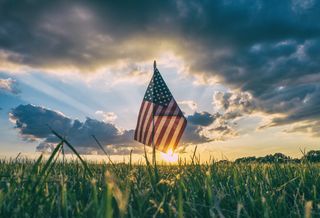Suicide
Addressing Rising Suicide Rates Among Women Veterans
The suicide rate among women veterans is nearly 5 times that of civilian women.
Posted November 27, 2018 Reviewed by Devon Frye
Earlier this morning, I came across a social media post addressing suicide among female military veterans that immediately captured my attention, and rightfully so. When I started sifting through the literature, it quickly became apparent that there is extraordinarily little in the way of research specifically addressing suicide among female military veterans, especially given that suicide rate among women veterans has increased far more dramatically than for male veterans.
I have addressed the topic of suicide and suicide prevention in a number of publications over the past few years, most of which concentrated on suicide rates and trends among public safety professionals specifically within law enforcement, corrections, and members of our military. However, my research to date has focused predominantly on male suicide since the majority of public safety professions have higher concentrations of males when compared to females. Since women veterans represent a statistically small percentage of our military, very few researchers have taken an interest in studying the specific pathways, if any, leading to suicide among women veterans and that must change.

For instance, NPR reported in 2017 that, “Veterans have a significantly higher rate of suicide than civilians. The numbers for female veterans, however, are two to five times higher than their civilian counterparts. And that number has grown steeply over the past decade.” Given the gravity of this important national public health issue, the US Department of Veteran Affairs (VA) has taken the lead in our national efforts to identify and understand the risk factors, develop evidence-based intervention and prevention strategies, and proactively identify and provide care for veterans in crisis or at risk for suicide. Since women are the fastest growing veteran subpopulation, we need to collectively come together as researchers and practitioners to devise programs and policies that will meet the gender-specific needs of women veterans.
While the underlying reasons leading to suicide may vary, many would agree that these thoughts might stem from Post-Traumatic Stress Disorder (PTSD) as a result from having served in combat. However, in one recent study, veteran affairs researchers concluded that the rate of suicide is higher among women who report having experienced Military Sexual Trauma (MST), which pertains to sexual assault, sexual discrimination, and/or sexual harassment during military service, when compared to women who have not experienced MST, or at least reported being victimized.

To put the topic of suicide in perspective:
- Men are more likely than women to die by suicide.
- Men are more likely than women to use lethal means, such as firearms, when attempting suicide; this is one reason for the higher suicide rate for men.
- In the general U.S. population, the suicide rate for men is more than three times the suicide rate for women.
- Women are more likely to use less lethal methods, such as poisoning and overdosing; however, female veterans are 33 percent more likely than civilian women to use a handgun.
- About 40,000 people die by suicide in the United States each year, and women account for 23 percent of these deaths.
- From 1999 through 2014, the percent increase in the age-adjusted suicide rate was greater for women (45 percent increase) than men (16 percent increase). During this same period, the suicide rate for women in the United States has increased in all age groups under 75.
- From 2001 through 2014, the suicide rate among women veterans increased to a greater degree (62.4 percent) than the suicide rate among male veterans (29.7 percent).
What is being done to identify and care for female veterans?

As mentioned, the US Department of Veteran Affairs is leading the national effort to address suicide among veterans and have taken a notably, stronger position in recent years in addressing the specific needs of women veterans. In addition to the VA’s efforts, community-based organizations are starting to surface in order to meet those needs; however, additional services are needed. For those organizations that do provide services for female veterans, it is imperative that they provide the resources necessary to support gender-appropriate facilities and hire clinicians experienced and trained in MST and PTSD counseling. Many female veterans also share some of the same stressors as male veterans such as financial hardship, difficulty transitioning to civilian life, loneliness, relationship challenges, and depression.
According to the Center for Women Veterans, the Female Veterans Suicide Prevention Act of 2016, which was signed into law by former President Obama, requires the VA to identify which mental health care and suicide prevention programs are the most effective for women veterans and those having the highest satisfaction rates among women veterans. The VA published an extensive fact sheet outlining the services that they provide specifically for women veterans that can be accessed at Facts About Suicide Among Women Veterans - August 2017.


